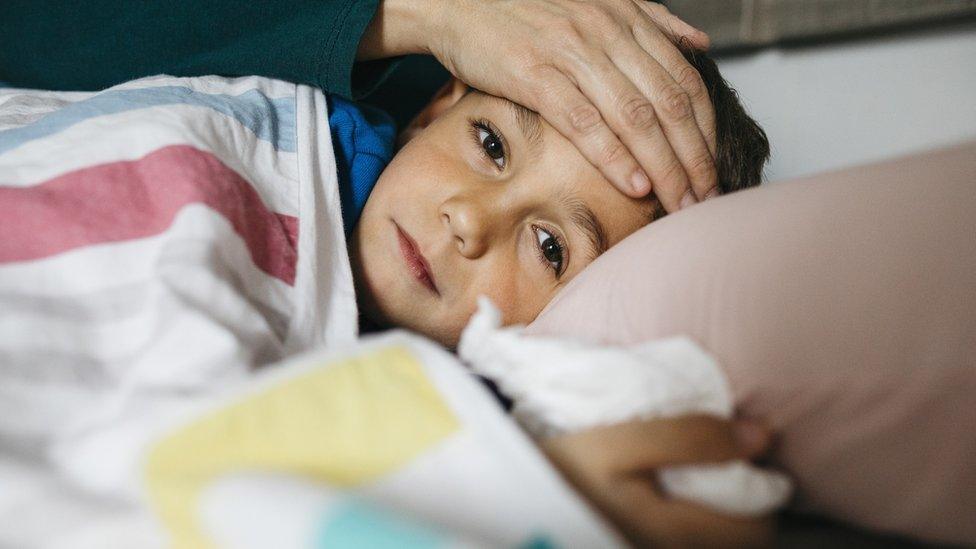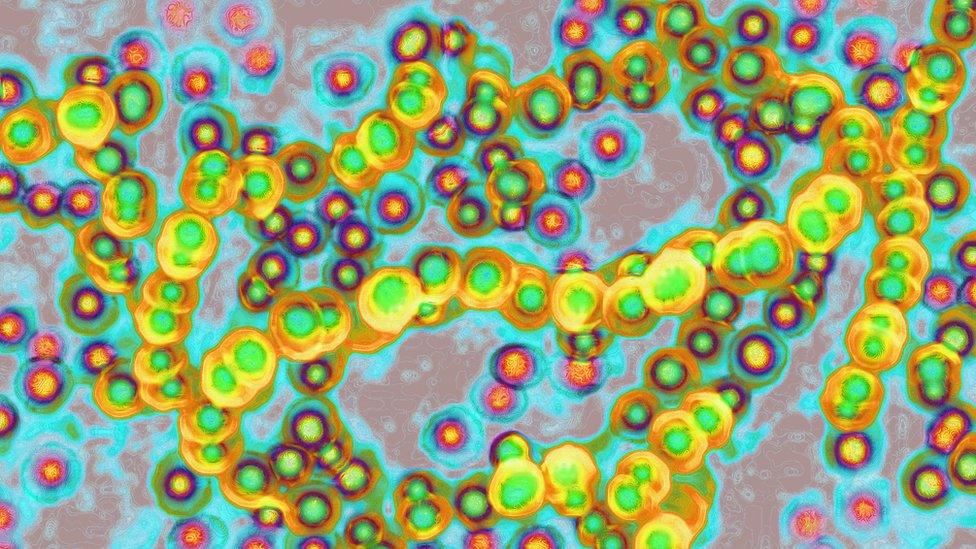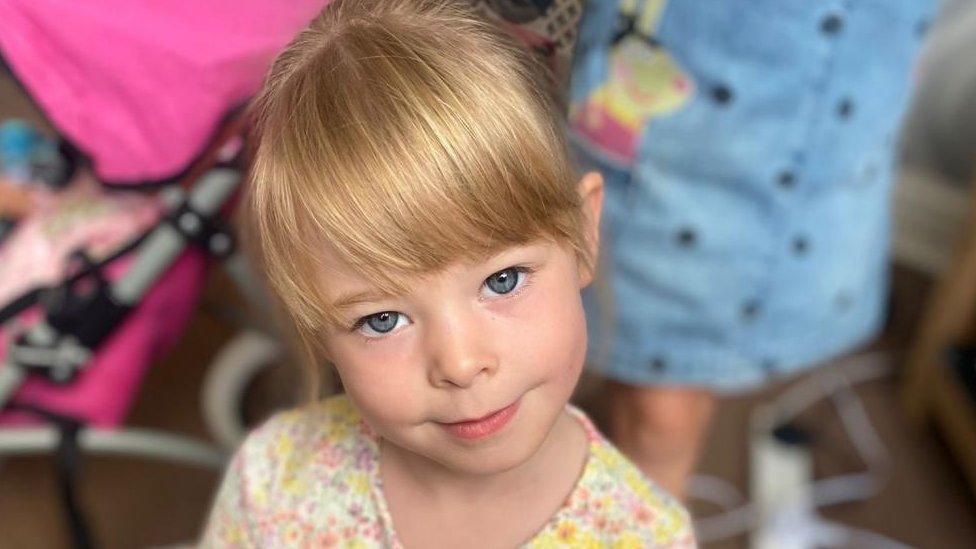Surge in Strep A cases reported across Scotland
- Published

Health officials have recorded more than 430 cases of Strep A in Scotland in two weeks.
Strep A infections are usually mild, causing illness ranging from a sore throat to scarlet fever, but can develop into a more serious invasive Group A Strep (iGAS) infection.
Jim McMenamin, of Public Health Scotland (PHS), said the numbers were similar to the last surge in 2017/18.
But despite six deaths across the UK no children have died in Scotland.
The UK Health Security Agency said the rise in Strep A cases is most likely due to high amounts of the bacteria circulating and increased social mixing.
Parents are being urged to look out for symptoms and to promptly contact their GP or NHS24 if they have any concerns.
Dr McMenamin told BBC Reporting Scotland there had been an increase in the seasonal expected numbers of Group A Strep (GAS) infections.
The epidemiologist said: "Over the last couple of weeks we have respectively seen 207 and 230 cases, which is very similar to what we have seen reported in the 2017/18 season but just an awful lot earlier than we might have seen in the past."
In very rare occasions the bacteria can get into the bloodstream and cause an iGAS infection.
PHS has received report of eight such cases in children under the age of 10 since September.
Dr Jim McMenamin, of Public Health Scotland, details some of the symptoms associated with Strep A infections
Dr McMenamin, head of health protection (infection services) at PHS, said Covid restrictions over the past two years meant many children had not encountered the streptococcal infections that are now beginning to be reported.
Among the symptoms that can develop is a rough rash which is pink in colour.
He said other things for parents to look our for is their child going off food or becoming irritable.
Dr McMenamin highlighted the importance of early diagnosis as antibiotics were "very effective" and usually had a positive impact within 24 hours.
But he added some patients would require hospital treatment.
Health officials confirmed on Friday that six children had died with iGAS - including five under 10-year-olds in England and a girl from Wales since September.
No deaths have been confirmed in Scotland or Northern Ireland.

One pupil died at the Victoria Primary School in Penarth, Vale of Glamorgan
The UK Health Security Agency said the last time there was an intensive period of Strep A infection in 2017-18 there were four deaths in England in the equivalent time frame.
Speaking to BBC Radio 4's Today programme on Saturday, infectious diseases paediatrician Prof Beate Kampmann said there had been three times as much scarlet fever this year than was seen pre-pandemic:
Prof Kampmann said: "It starts off with a high fever, very sore throat and very red tongue, which has this sort of papillae - eventually developing a rash which feels a bit like sandpaper.
"The rash starts in the elbows and behind the neck. It tends to then peel after about ten days because the disease is caused by a toxin that is produced by this bacterium."
She said children with a fever should be kept off school and added Group A Strep was "very, very treatable" with penicillin.
'Big rash of cases'
Virologist Dr Chris Smith said the general rise in Strep A infections could be due to a drop in immunity following the pandemic.
He told BBC Breakfast: "There's something about the vulnerability of the population and particularly younger people.
"What has changed is that younger people have been through three years, almost, of relative isolation from each other.
"They haven't caught the normal infections at the normal rates and at the normal times that normal children of that sort of age bracket would have done.
"So, we wonder whether it is that we are seeing a big rash of cases all at once."
UKHSA advises people to call 999 or go to A&E if:
your child is having difficulty breathing - you may notice grunting noises or their tummy sucking under their ribs
there are pauses when your child breathes
your child's skin, tongue or lips are blue
your child is floppy and will not wake up or stay awake

What is Strep A?

Group A streptococcal (GAS) infection is caused by strains of the streptococcus pyogenes bacterium
The bacteria can live on hands or the throat for long enough to allow easy spread between people through sneezing, kissing and skin contact
Most infections cause mild illnesses such as "strep throat" or skin infections
It can also cause scarlet fever and in the majority of cases this clears up with antibiotics
On rare occasions the bacteria can get deeper into the body - including infecting the lungs and bloodstream. It is known as invasive GAS (iGAS) and needs urgent treatment as this can be serious and life-threatening

Related topics
- Published3 December 2022

- Published2 December 2022

- Published9 December 2022
